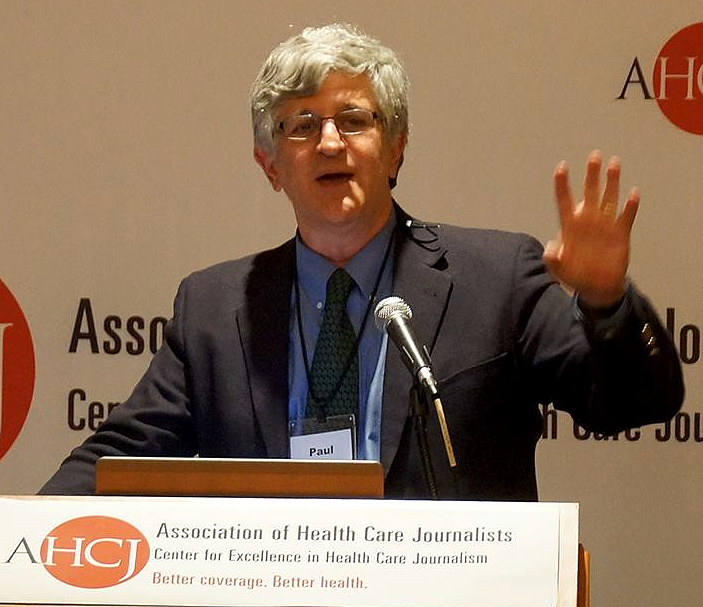Things I Learned at Health Journalism 2014

Dr. Paul Offit addresses journalists at AHCJ's Health Journalism 2014.
I’m happy to report from Denver that the future of health journalism is in good hands. The ideas being shared at Health Journalism, the annual conference from the Association of Health Care Journalists, this past week were innovative, provocative, and, most importantly, audience focused.
Gatherings of writers can easily become all about the work and not about the people who should be the focus of the work. But AHCJ brings together not only some of the brightest minds in journalism but also some of the most empathetic.
Here’s the first of two posts on the five main things I learned from them this year.
See Part 2: Things I Learned at Health Journalism 2014
1. Talk to the people who aren’t trying to talk to you. Tony Leys from the Des Moines Register shared how he likes to go to public meetings but doesn’t grab the person who just left the microphone after a long harangue. Instead, he walks around and hands out his card to everyone else. He wants to find the people who have a concern but aren’t necessarily seeking the spotlight.
The Denver Post’s Electa Draper said she goes to the state motor vehicles office to talk with people. They are often looking for a distraction anyway.
Getting out of the office and tapping the opinions of people outside the health care industry can also help you avoid a common health journalism pitfall: bedazzlement.
“One of the big joys of health care reporting is one of its hazards,” Felice J. Freyer from the Providence Journal said. “You are meeting some of the most brilliant, caring, amazing people that you will ever find, and you can get awestruck by them. And they really are awesome people. But don’t let their awesomeness overshadow your cynicism, or at least your skepticism.”
Leys goes so far off the beaten path that he has taken to regularly reading the obits to look for stories. He recently found a stunning one about a man who had been lobotomized in a state institution. Then, when he died in a state institution’s care, the Iowa Department of Human Services lied about his cause of death.
2. Recognize that drug companies do good things, too. As is the case every year, drug companies came in for a lot of criticism from panelists at this year’s Health Journalism conference. But I also heard a discernible note of realism about pharmaceuticals. Points made were:
1. Most of us have benefited from prescription drugs in some fashion.
2. Drug companies turn good ideas that nobody may ever see or afford into — in the best cases — widely accessible and life-improving health strategies.
3. Affiliation with a drug company should not be a mark of dishonor.
Vaccine inventor and anti-vaccine myth buster Dr. Paul Offit made this last point during a conflict-of-interest discussion on Saturday.
And, in a keynote address later that day, he said that it would have been impossible for him and H. Fred Clark to bring the rotavirus vaccine they discovered to market on their own.
“Merck spent $1.2 billion on that vaccine,” said Offit, the Chief of the Division of Infectious Diseases at The Children’s Hospital of Philadelphia and the Director of the Vaccine Education Center.
“The problem is that these are expensive products to make,” he added. “Vaccines are held to a high standard [by the FDA], as they should be, but for not a lot of money in return. You take it once or a few times. It’s not like lipid lowering agents or neurological drugs. There’s no such thing as a blockbuster vaccine.”
Offit’s talk already prompted one story by David Kroll at Forbes who explored many of the themes he raised.
Similarly, Dr. Michelle Barron from the University of Colorado explained how the pipeline for antibiotics has dwindled over the past 20 years, with just two new antibiotics approved by the FDA between 2008 and 2012.
That’s scary for infectious disease experts like Barron who are seeing a rise in drug-resistant bugs like multi-drug resistant strains of gonorrhea and salmonella.
Next Post: Insights from Health Journalism 2014 continues, with tips on learning from failure, health journalism cheerleading, and not waiting for the Incredible Hulk.
Photo courtesy of Maggie Prude/AHCJ
